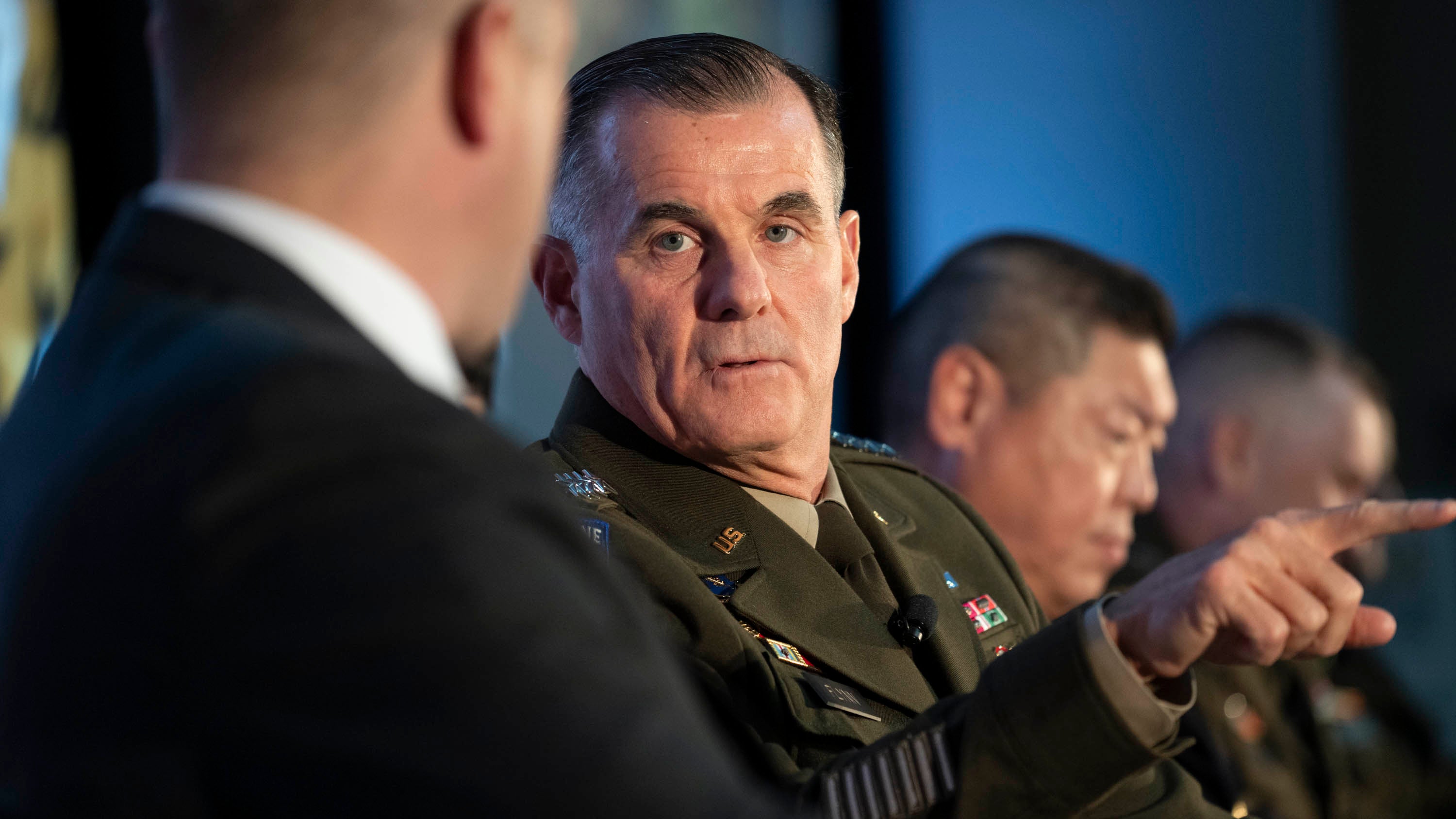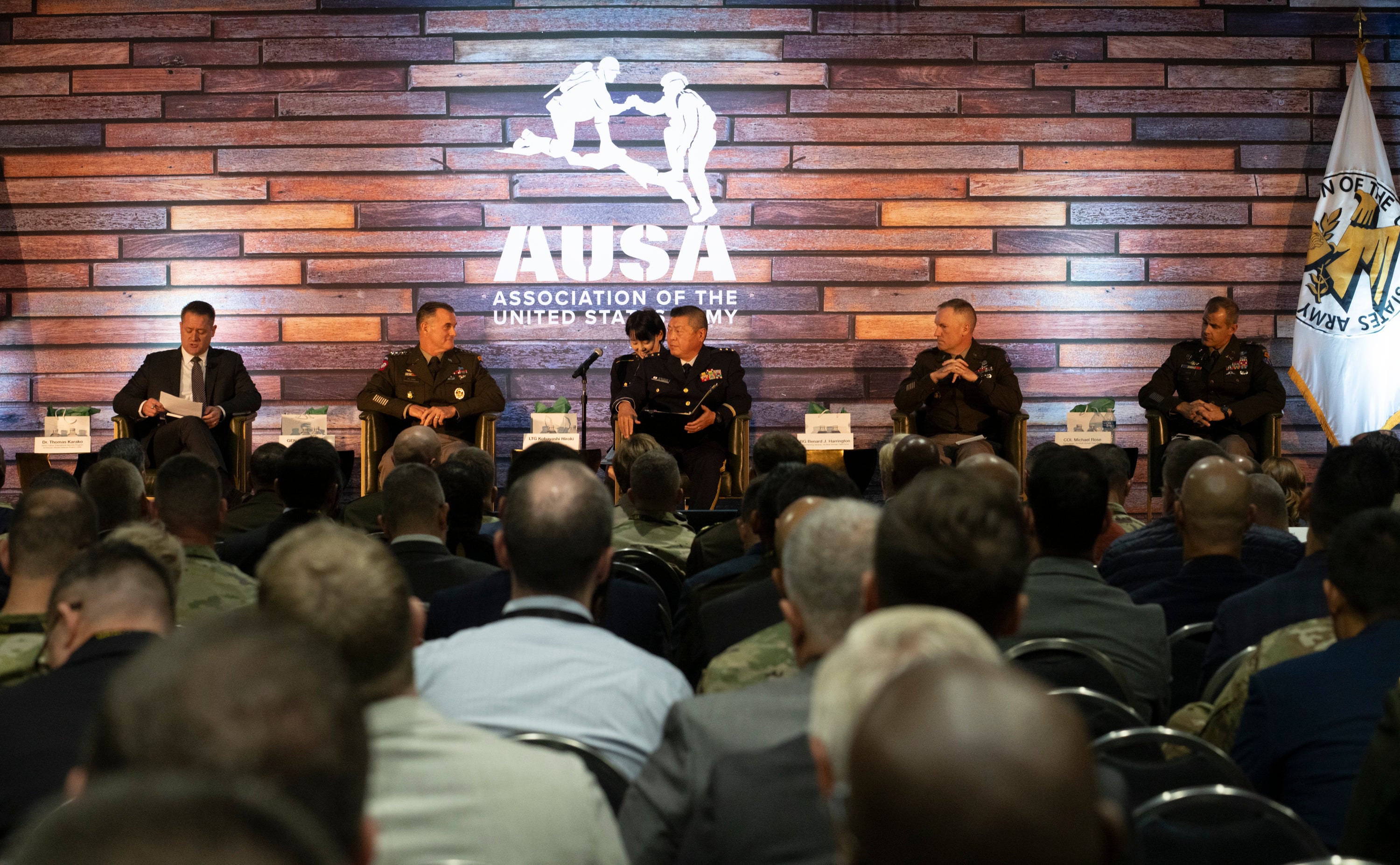Army Has Key Role in Preventing War in Indo-Pacific
Army Has Key Role in Preventing War in Indo-Pacific

With an ongoing war in Europe and a new war in the Middle East, it’s more important than ever to keep war in Asia at bay by building the Army’s presence and capabilities in the Indo-Pacific, said Gen. Charles Flynn, commander of U.S. Army Pacific.
By building relationships, forward positions and training areas and conducting regular, campaign-style exercises with partners and allies, the Army is creating enduring operational advantage in the region for the joint force, he said.
“The goal is no war, and that is the land power’s contribution to the joint force to prevent that from happening,” Flynn said Oct. 10 in a forum at the Association of the U.S. Army’s 2023 Annual Meeting and Exposition.
“What those joint interior lines are doing, along with Operation Pathways and along with training in the region, is to take time and space away from [China], to deny key terrain … and to keep our physical presence forward with hard power to deter a war from happening,” Flynn said.
Flynn noted three strategic advantages the Army contributed to establish that operational endurance in the region, starting with the creation of the Joint Pacific Multinational Readiness Center, the first combat training center built by the Army in 50 years.
With campuses in Alaska and Hawaii, the real gem is the center’s exportable capability, which has been extended into training centers in Australia, Korea and Japan, and discussions are underway to build one in the Philippines, among other islands.
“The point I’m making is, it’s not just the training centers in Hawaii and Alaska, which look exactly like the region, it’s the exportable version of the training center in the region,” Flynn said. “Why is that happening? Because the region sees the value of what our combat training centers represent, and they want to get that level of high-end training in their countries.”
The second thing the Army is doing, he said, is increasing interoperability with allies and partners and increasing “the confidence they have in our tactics, techniques and procedures,” Flynn said.
Most importantly, the Army’s enduring reach and training opportunities with allies and partners are “denying key terrain to the [People’s Republic of China],” Flynn said. “We are taking time and space away from them by being forward in the region with combat credible forces, and we are adversary-focused and we’re conducting a series of rehearsals out there.”
— Gina Cavallaro


